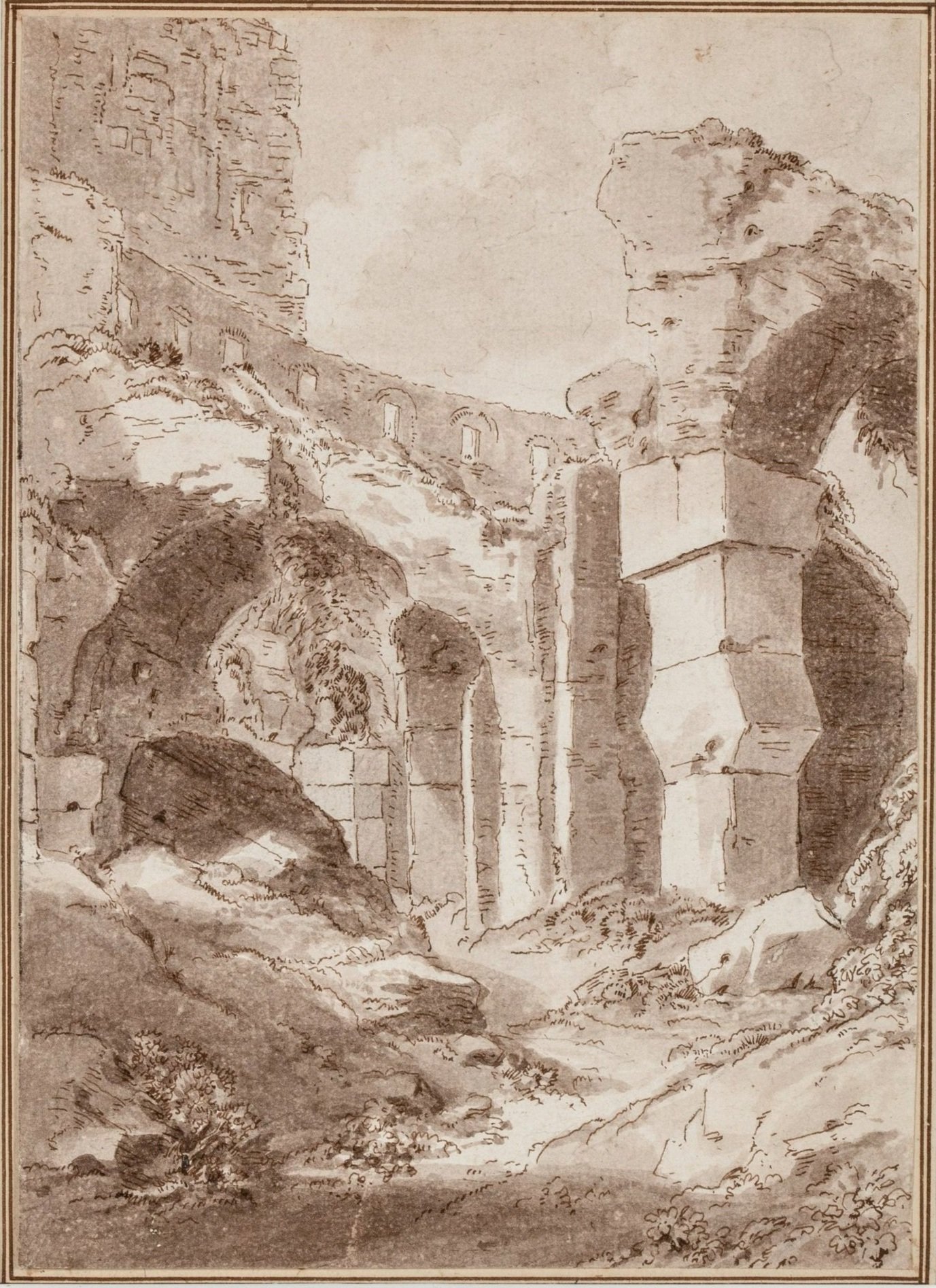ETIENNE JEAURAT
(Paris 1699 – 1789 Versailles)
View of the Interior of the Colosseum
Pen and ink with wash on paper
8 x 6 inches (20.3 x 15.2 cm)
Provenance:
Private Collection, New York.
Throughout the history of art in Europe, the city of Rome and the monuments of its classical past served as a source of inspiration and wonder for artists and collectors. This was especially true in the 18th century, when the fashion of young artists sojourning in Italy as an essential part of their training, or young aristocrats traveling there as part of the Grand Tour, was at its height. The mutual interests of artists and Grand Tourists in studying and having souvenirs of the classical works and sites they encountered gave rise to a wealth of images of Rome and its treasures both in paint and on paper.
The present view of the interior of the Colosseum is the work of the French painter and draughtsman Etienne Jeaurat, who arrived in Rome in 1724 at the age of 25. Jeaurat journeyed to the Eternal City with the painter Nicolas Vleughels, to whom he had been entrusted at a young age following the death of his parents and with whom he trained. Jeaurat spent the next several years in Italy while Vleughels held the position director of the Académie de France. While his style and choice of subjects remained distinctly French, the influence of Rome on the young Jeaurat is most clearly felt in his drawings recording views he encountered.
The grandeur of the Colosseum clearly captivated the artist. Here Jeaurat has taken as his subject a broken archway with the remnants of a single, impressive column at right. The view opens up onto the surviving upper section of the arena in the background and the partially destroyed outer wall looming above. Jeaurat had a clear interest in the play of light and shadow across the stone surfaces, beautifully rendered through application and absence of ink of wash. While the weeds and grass sprouting in the foreground and amidst architecture present an unvarnished view of the Colosseum’s ruined state, the low vantage point and tight cropping of the composition nevertheless monumentalizes the structure. In both conception and technique, our drawing echoes another interior view of the Colosseum that is signed and dedicated by Jeaurat that recently appeared on the art market (Fig. 1). Together, these two drawings reveal the artist’s interest in the complex arrangement of intricately cut blocks of stone in the columns. Clearly the ancient site served as a training ground for Jeaurat, who studied the Colosseum from a variety of vantage points, capturing complex perspectival views.
Fig. 1. Etienne Jeaurat, The Interior of the Colosseum, Rome, pen and ink with wash on paper, 14 x 9 ⅞ inches.
Following his return to Paris in 1731, Jeaurat was admitted to the Académie Royale. He exhibited for the first time at the Louvre in 1737 and shoed regularly at the Salon from them until 1769. His work as a draughtsman was also celebrated, and the Manufacture des Gobelins produced several tapestries based on his designs. He also held several prominent positions across his career, including being appointed Garde des Tableaux du Roi at Versailles in 1767, and having several posts in the Académie, including professor in 1743, rector in 1765, and chancellor in 1781.



